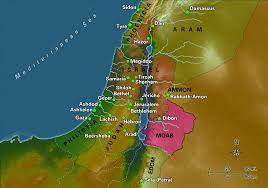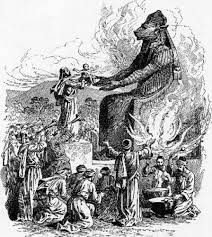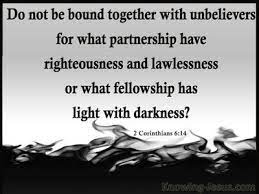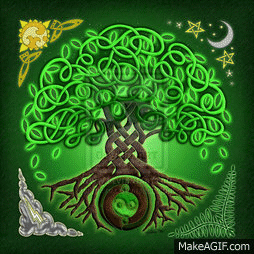
Marriage Archetypes
See Also
The Glorious Church
The Palengensia

Hieros gamos or Hierogamy (Greek ἱερὸς γάμος, ἱερογαμία "holy marriage") is a sacred marriage
that plays out between a god and a goddess,
especially when enacted in a symbolic ritual where human participants represent the deities.
The notion of hieros gamos does not always presuppose literal sexual intercourse in ritual,
but is also used in purely symbolic or mythological context,
notably in alchemy and hence in Jungian psychology.
Hieros gamos is described as the prototype of fertility rituals. (Wikipedia)

What is an archetype? Certain patterns of behavior in life are so common they constitute templates which everyone takes for granted. Marriage is the very oldest of these, dating back to the first man and his wife. Psychologist C. G. Jung was fascinated with this subject--it is the basis for his Analytical Psychology. Jung's mentor, Sigmund Freud was an outspoken atheist, but Jung mellowed out, living in Switzerland, the home of the Protestant Reformers. His categorizations of archetypes continues to influence both psychologists and theologians.
This article goes elsewhere, but the informed reader ought to know something about the subject. A Biblical world-view is our approach here. The opening verses of Hebrews points out that visible realities reflect patterns in the invisible which are part of a grand created order in the universe.
"By faith we understand that the worlds (aion) were framed (katartizo) by the word (rhema) of God, so that what is seen (phaino) was made from things that are not visible." (Hebrews 11:3)
At present eight billion persons live on our crowded planet, all have been generated in about 120 generations since Adam and Eve. The big picture has been called "The Family of Man."
It ought to be obvious that my life, your life, began with the fusion of a single sperm with a single egg. A flash of light has been recorded on microscope cameras, seen at the moment of conception. I believe this is the instant a uniquely created spirit from God joins the zygote, creating that unique human being. Up to that moment we had the ingredients for a living cell. The union of a spirit with a body generates the soul. We are each tripartite: body, soul, spirit. Therefore every child conceived is a gift from God. No child should be brought into the world except by the agency of a marriage union between a committed man and a woman. Biologically every embryo is flawed, as Adam and Eve painfully experienced when their first born Cain murdered his younger brother Abel. The spirit of every person is destined to become accountable to our Creator--each of us must choose to live in concord with the Creator, or go our own way. This will happen, often, in spite of parental influence.
The damage to the entire race because of the choice of the first parent is cosmic. It's called "Original Sin."
This article is about the state of the world as it is now, well down the path of destruction. Every human being born on earth has great inherent worth. We bear the very image of God. We have each been died for by the Son of God who desires that no one of us be lost. We are each morally accountable to our Creator after a certain age. One of the most glaring issues today is the widespread rejection of heterosexual marriage and the near universal tolerance of sex outside of marriage.
See Sexuality and Wholeness, and The Excluded Ones. Genital Sexual expression will apparently be phased out soon.

 The symbolism of bride and bridegroom, man and wife in marriage are archetypal. Jesus is soon to take a virgin bride out from the nations. See The Revirginized Bride. The Adulterous wife of Yahweh, (Israel)-- is to be restored. Much more than literal men and women is are these symbols in the Bible that describe our failure to live up to the two great commandments:
The symbolism of bride and bridegroom, man and wife in marriage are archetypal. Jesus is soon to take a virgin bride out from the nations. See The Revirginized Bride. The Adulterous wife of Yahweh, (Israel)-- is to be restored. Much more than literal men and women is are these symbols in the Bible that describe our failure to live up to the two great commandments:
The same day some Sadducees came to Jesus, saying there is no resurrection; and they asked him a question, saying, ‘Teacher, Moses said, “If a man dies childless, his brother shall marry the widow, and raise up children for his brother.” Now there were seven brothers among us; the first married, and died childless, leaving the widow to his brother. The second did the same, so also the third, down to the seventh. Last of all, the woman herself died. In the resurrection, then, whose wife of the seven will she be? For all of them had married her.’
Jesus answered them, ‘You are wrong, because you know neither the scriptures nor the power of God. For in the resurrection they neither marry nor are given in marriage, but are like angels in heaven. And as for the resurrection of the dead, have you not read what was said to you by God, “I am the God of Abraham, the God of Isaac, and the God of Jacob”? He is God not of the dead, but of the living.’ And when the crowd heard it, they were astounded at his teaching.
When the Pharisees heard that he had silenced the Sadducees, they gathered together, and one of them, a lawyer, asked him a question to test him. ‘Teacher, which commandment in the law is the greatest?’ He said to him, ‘ “You shall love the Lord your God with all your heart, and with all your soul, and with all your mind.” This is the greatest and first commandment. And a second is like it: “You shall love your neighbor as yourself.” On these two commandments hang all the law and the prophets.’ (Matthew 22:23-40)

David Solway
Dec 27, 2021

Supporters of the Black Lives Matter movement rally on Interstate 5 in Sacramento, Calif. after the shooting of Stephon Clark. Thursday, March 22, 2018. (Hector Amezcua/The Sacramento Bee via AP)
When a civilization decides it wants to destroy itself, it seems there is no stopping it. As Toynbee wisely said, civilizations do not die of murder but of suicide. It is in its way a perversely exhilarating spectacle: not many get to see in their lifetime a civilization coming to pieces before their very eyes, like a star going supernova. But it is also, and principally, a tragic spectacle, for this is the detritus we leave our children. In On the Eve of the Millennium: The Future of Democracy Through an Age of Unreason, Irish historian Conor Cruise O’Brien generously gives us until the third century of our millennium. He may be wrong. The momentum toward self-destruction proceeds slowly, gradually accumulating velocity until a moment arrives when the collapse appears to happen overnight. As John of Patmos warns in Revelation (18:10), “for in one hour is thy judgment come.”
The omens are all around us and are unmistakable. Nations institute crippling global warming policies, restricting travel and imposing crushing carbon levies, when all the signs indicate an impending period of global cooling. The Green crusade with its arsenal of wind turbines and solar arrays has devastated the reliable energy sector, promising exorbitant costs, power brownouts, and even colder winters. The woke and social-justice movements double down on their gender-fluidity compulsion that flies in the face of biological fact. The feminist psychosis is poisoning the relation between the sexes and destroying the family. The press has abdicated its function of reporting the news and become the propaganda arm of increasingly repressive governments. The education establishment from K-12 to postgraduate study has grown decadent, politically partisan, and likely unsalvageable. Medical fascism is on the march. The absurd and counter-productive pandemic mandates have led to soaring unemployment, school closures, the shuttering of businesses, excess deaths, social division, and devastated economies, turning everyday life into a deranged parody of itself. The daftness of these measures defies understanding.
In such times of general distress, societal upheaval, intellectual vacancy, worldwide plague, and widespread hysteria amounting to a kind of universal madness, one is tempted to turn again to the Book of Revelation with its lurid imagery and prophetic imprecation—even if one is not a believer. The fit between the ancient book and the contemporary scene is too close for comfort. Is a divine prophecy about to be fulfilled? One thinks also of the four beasts of the prophet Daniel’s vision (Book of Daniel 7:1-28), representing four mighty civilizations or empires: “they had their dominion taken away: yet their lives were prolonged for a season and time” (7:12). Civilizations rise and fall and are always at the mercy of the irruption of the bestial.
Indeed, as many have observed, the sculpture of a winged beast recently unveiled outside UN headquarters in New York, called “The Guardian of International Peace and Security,” bears a startling resemblance to the beast described in Revelation (13:1-3) and Daniel (7:4-5). Of course, winged theriomorphic statues are not unique and can be found in various cities around the world—Madrid, Venice, Prague—but the UN statue has the aura of the premonitory. Newsmax magazine reports on the surprising number of Americans who expect Christ’s return and examines the reasons why many believe the Second Coming is imminent. As they say, it’s in the air.
Or are we merely witnessing the mechanics of a natural process? Does the entropic principle in nature apply not only to the physical cosmos but to human civilization as well? Is entropy historical as well as cosmological? Does what occurs at the molar level translate to the molecular? Is a civilization only a human life writ large?
Such questions abound. What can explain this deadly accumulation of factors—“evils” some would call them—impinging in a perfect storm of destructive forces at a unique moment in history? They are, clearly, symptoms of a larger civilizational sickness. Have we simply grown weary of sustaining the elaborate and demanding social structure that we—or our predecessors, rather—have so laboriously built over the centuries? Have we grown too pampered and forgetful to assume the labor of self-preservation? Or is it that, in a protracted spasm of self-laceration, we have turned against a civilization—our own—that has spent too heavily for our sentimental tastes and attitudes in the necessary imperial work of exploration and colonization? Is it absolution we crave for our supposed “hegemonic” transgressions in a final, morally inevitable Götterdämmerung? Have we engaged in what Albert Camus in Resistance, Rebellion, and Death called a “policy of expiation” that can only mortgage our future?
There is a disturbing poem by the German poet Gottfried Benn, entitled Gesänge (“Songs”), written on the eve of World War I, which expresses this pivotal moment in the cultural life of a people when it feels itself overwhelmed by the struggle of existence and craves instead the palliative of ease, forgetfulness, and indifference, the surrendering of will and ego:
O dass wir Ururahnen wären.
Ein Klümpchen Schleim in einem warmen Moor.
Leben und Tod, Befruchten und Gebären
glitte aus unseren stummen Säften vor.
(O that we were our primal ancestors.
A little clump of slime in a warm moor.
Then life and death, insemination and birth
would glide out of our dumb lymph.)
It is difficult to disentangle the psychological and historical salients at work in these orgies of renunciation, but it is also hard to repress the suspicion that, at the barometric levels of the cultural sensibility, we really do want to die. The data at our disposal are manifold. The world is equal to the sum of the information we have of it. But one thing is certain in our own historical moment: the news is not good.
The most damning explanation of all would be that we are facing what is irrevocable and foreordained, that we are casualties of inexorable historical forces that thinkers and historians like Polybiu, Ibn Khaldun, Vico, Spengler, and Toynbee spelled out for us, each in his own way elaborating a cyclical theory of the rise and fall of civilizations. Spengler’s notion of historical “contemporaneity” involved not present contiguity among civilizations sharing the calendar but “corresponding phases” and “chronological parallels” over long tracts of time. In this sense we would be contemporary with late fourth century-early fifth century Rome, a civilization, as Spengler writes, “los[ing] its desire to be, and… wish[ing] itself out of the overlong daylight and back into the darkness…”
The momentous question that now confronts us is whether civilizational collapse, which cannot be halted, can nevertheless be delayed owing to the restoration of the faculty of reason in a significant minority of the population. Can a lucid remnant manage to rise above the censorship regimes of the digital platforms, intelligence agencies, health bureaucracies, and mob vigilantism? In short, can we learn to think again? As poet and author James Sales writes in the provocative essay How Dante Provokes Thinking, “unless we get serious about understanding what great thinking looks like—found in works by theologians, philosophers, writers, and poets—we as a civilization are going to fall. The falling will be into the stealth ideologies—equality [he means equity], diversity, woke-ism—all underpinned by a virulent form of Marxism, and the end of all true values as we know and love them.”
The crisis in which the West now finds itself is largely one of its own making and is rooted primarily in the false relation it has entered into with history. Its response to the tangled exigencies of the contemporary world is grounded in a willful and Procrustean tendency to mutilate and reconfigure the past in such a way as to oversimplify and deform the issues that confront and surround it. Many Americans, especially those associated with the Left—East coast intellectuals, West coast thespians, teachers’ unions, the University rabble, the Twitter pack, the Democrat leadership, not to mention the putatively non-aligned mainstream Churches—have reinterpreted moral bankruptcy and political short-sightedness as advanced social thinking and liberal high-mindedness. Such prodigies of cognitive stupefaction are obviously true of the West in general.
What Camus stigmatized as “the follies…to be found in the habits and functioning of our intellectual and political society” have borne their tainted fruit. A defunct education apparatus; race hucksterism; guilt for past faults that have been largely rectified; contempt for a literate, scientific and highly advanced civilization without rival in the historical ledger; and massive ignorance of unprecedented accomplishment in all the domains of thought and discovery are now the order of the day. As Sales wrote, “so many people have now lost the ability to think” that they fall in with the mindless memes of political correctness, intersectional feminism, social justice binaries, transgenderism, sexual depravity, trick science, rampant virtue-signalling, and unrelieved sensuality in place of analytic rigor.
The lesson we might have learned by this time is that our distorted view of Judeo-Christian civilization cannot serve as an image of the good, as an ideal that can mold beneficially both the present and the future, unless we also struggle faithfully to preserve the traditions of cultural coherence via a thorough and meticulous study of the annals and muniments of the past. As William Butler Yeats wrote in one of his greatest poems, Sailing to Byzantium:
Caught in that sensual music all neglect
Monuments of unageing intellect.
The signs of cultural debasement and civilizational decline are everywhere to be seen across the entire cultural spectrum from small to large, from the stumbling hyphenation of the word “like” in ordinary speech to irresponsible gain-of-function research. The sorcerer’s apprentice is sweeping us out of house and home. If Benn and Spengler are right, and the Books of Revelation and Daniel are indeed prophetic, there is no saving a civilization that has surrendered its informing principles of intellectual vitality and belief in itself and that has lost the will to survive. Surely, if our knowledge of history—of who we are—and the inclination toward reason remain incomplete or defective, we can only expect to suffer what we have imprudently attempted to remake. Any hope of at least deferring the inevitable resides in the efforts of a brave and enlightened cultural residue, currently under prolonged and unappeasable attack by the befuddled heirs of a sustaining yet despised civilization.

For media inquiries, please contact communications@pjmedia.com
David Solway is a Canadian poet and essayist. His most recent volume of poetry, The Herb Garden, appeared in 2018 with Guernica Editions. His manifesto, Reflections on Music, Poetry & Politics, was released by Shomron Press in 2016.
He has produced two CDs of original songs: Blood Guitar and Other Tales and Partial to Cain, on which he was accompanied by his pianist wife Janice Fiamengo. His latest book is Notes from a Derelict Culture, Black House, London, 2019.\\

Absolutes in Marriage as Seen by God
Therefore be imitators of God as dear children. 2 And walk in love, as Christ also has loved us and given Himself for us, an offering and a sacrifice to God for a sweet-smelling aroma.
3 But fornication and all uncleanness or covetousness, let it not even be named among you, as is fitting for saints; 4 neither filthiness, nor foolish talking, nor coarse jesting, which are not fitting, but rather giving of thanks. 5 For this you know, that no fornicator, unclean person, nor covetous man, who is an idolater, has any inheritance in the kingdom of Christ and God. 6 Let no one deceive you with empty words, for because of these things the wrath of God comes upon the sons of disobedience. 7 Therefore do not be partakers with them.
8 For you were once darkness, but now you are light in the Lord. Walk as children of light 9 (for the fruit of the Spirit is in all goodness, righteousness, and truth), 10 finding out what is acceptable to the Lord. 11 And have no fellowship with the unfruitful works of darkness, but rather expose them.
12 For it is shameful even to speak of those things which are done by them in secret. 13 But all things that are exposed are made manifest by the light, for whatever makes manifest is light. 14 Therefore He says:
“Awake, you who sleep,
Arise from the dead,
And Christ will give you light.”
15 See then that you walk circumspectly, not as fools but as wise, 16 redeeming the time, because the days are evil.
17 Therefore do not be unwise, but understand what the will of the Lord is. 18 And do not be drunk with wine, in which is dissipation; but be filled with the Spirit, 19 speaking to one another in psalms and hymns and spiritual songs, singing and making melody in your heart to the Lord, 20 giving thanks always for all things to God the Father in the name of our Lord Jesus Christ, 21 submitting to one another in the fear of God.

Marriage—Christ and the Church
22 Wives, submit to your own husbands, as to the Lord. 23 For the husband is head of the wife, as also Christ is head of the church; and He is the Savior of the body. 24 Therefore, just as the church is subject to Christ, so let the wives be to their own husbands in everything.
25 Husbands, love your wives, just as Christ also loved the church and gave Himself for her, 26 that He might sanctify and cleanse her with the washing of water by the word, 27 that He might present her to Himself a glorious church, not having spot or wrinkle or any such thing, but that she should be holy and without blemish. 28 So husbands ought to love their own wives as their own bodies; he who loves his wife loves himself.
29 For no one ever hated his own flesh, but nourishes and cherishes it, just as the Lord does the church. 30 For we are members of His body, of His flesh and of His bones. 31 “For this reason a man shall leave his father and mother and be joined to his wife, and the two shall become one flesh.” 32 This is a great mystery, but I speak concerning Christ and the church.
33 Nevertheless let each one of you in particular so love his own wife as himself, and let the wife see that she respects her husband. (Ephesians 5)
|
The End of Sex, I
The End of Sex, II
The Palingenesia

Pagan America: The Meaning of Balaam
 The map on the left shows that the territory of Moab, now part of Jordan, lies just South and East of Jericho where the Jews will soon enter the promised land at last, as described the Book of Joshua. First comes the Second Giving of the Law, Deuteronomy, and the death of Moses. Moab is located where Sodom and Gomorrah were located. These Canaanite cities were destroyed in the time of Abraham, about 500 years earlier. See The Meaning of Sodom and Gomorrah.
The map on the left shows that the territory of Moab, now part of Jordan, lies just South and East of Jericho where the Jews will soon enter the promised land at last, as described the Book of Joshua. First comes the Second Giving of the Law, Deuteronomy, and the death of Moses. Moab is located where Sodom and Gomorrah were located. These Canaanite cities were destroyed in the time of Abraham, about 500 years earlier. See The Meaning of Sodom and Gomorrah.
America has three main gods now, they are fallen angels, Canaanite deities. They are Baal, Ashteroth and Moloch. The worship of sex underlies all three.
Scientific Naturalism is our unofficial national religion these days! In philosophy, naturalism is the idea or belief that only natural laws and forces (as opposed to supernatural or spiritual ones) operate in the universe. Adherents of naturalism assert that natural laws are the only rules that govern the structure and behavior of the natural world, and that the changing universe  is at every stage a product of these laws.
is at every stage a product of these laws.
Naturalism is not so much a special system as a point of view or tendency common to a number of philosophical and religious systems; not so much a well-defined set of positive and negative doctrines as an attitude or spirit pervading and influencing many doctrines.
As the name implies, this tendency consists essentially in looking upon nature as the one original and fundamental source of all that exists, and in attempting to explain everything in terms of nature. Either the limits of nature are also the limits of existing reality, or at least the first cause, if its existence is found necessary, has nothing to do with the working of natural agencies. All events, therefore, find their adequate explanation within nature itself. But, as the terms nature and natural are themselves used in more than one sense, the term naturalism is also far from having one fixed meaning.
With the exception of pantheists--who believe that Nature is identical with divinity while not recognizing a distinct personal anthropomorphic god--theists challenge the idea that nature contains all of reality. According to some theists, natural laws may be viewed as secondary causes of God. (Wikipedia)

Baal, Ashtoreth and Molech – God’s Old Testament rivals
Redlands Daily Facts January 11, 2007
That the Hebrew God is the best known of all gods worshiped in the world today needs no explanation. The Jews, the Christians and the Muslims, among others, all accord the ancient Hebrew God their devotion. Whatever else those three faiths might say, they would agree with Psalm 95:3, that “The Lord is a great God and a great king above all gods.”
But God is not and has not been without his rivals, even in antiquity. Even in the pages of the Hebrew Bible, there were many alternatives to the Lord God of Israel, and in this article we will consider three of the now largely forgotten deities who once opposed Him, who alone is most great.
Perhaps the best known ancient rival to the Hebrew God was the pagan Baal, a term which means “master” or Lord”, and is probably originally a general term for a variety of local deities in the area in and near the holy land. An example of a local Baal cult is called “Baal-peor” mentioned in Numbers 25:3, where the Israelites disgraced themselves in some sexual rites with the Moabites and worshiped the local god, incurring the wrath and punishment of their own God.
Over the centuries, however, the cults of the “Baalim” became merged and several specific larger cults developed. The best known of these was the cult of the Syrian god Melqart, worshiped by King Ahab of Israel and his “wicked” wife Jezebel. It was this Israelite worship of Baal which was challenged by the Hebrew prophet Elijah in his famous conflict with the prophets of Baal on Mount Carmel in I Kings 18, when he challenged the false prophets to bring down fire from heaven. When the prophets of Baal failed to do so, Elijah’s God did so, resulting in the slaughter of the prophets of Baal by an angry mob. But the worship of the god was not so easily extinguished.
The god or gods called Baal normally required the sacrifice of children, often the first-born male child, by sacrifice by fire. It has been suggested that the famous story of Abraham’s sacrifice of his son Isaac, when God told Abraham to sacrifice his son and then forbade the sacrifice at the last moment, was told to the ancients as a dramatic and instructive narrative which commanded the Hebrews not to follow the pagan cults of the land. It was as if to say that even the great patriarch himself did not sacrifice his son, but it was only a test of his faith, and so too good Hebrews must not follow the practice of the people of the land however tempted they were.
In post-biblical archeology, we note that the cult of Baal was taken by the Phoenicians to North Africa, where he was worshiped by the Carthaginian peoples. We are not surprised to find his name incorporated into the name of the great Carthaginian general Hannibal who harried Fabius Maximus and the generals of Rome with his wonderful elephants. In any event, Baal’s cult came to an abrupt end with the Roman sack of Carthage in 146 B.C.
 Another popular goddess worshiped in the days of the Bible was Ashtaroth, a deity associated with sexuality and fertility, and by some peoples war. He was probably tied to the Mesopotamian cult of Ishtar, which in turn was probably derived from the very ancient Sumerian mother goddess Inanna. The Hebrew Bible also calls this same goddess Astarte. The ancient Hebrew prophets denounced her cult many times, most likely because she was worshiped with sexual fertility rites. Certainly her cult predated the Hebrews by many centuries, and when the Philistines slaughtered Saul, the first king of Israel, they could think of no better tribute than to place his battle armor in her temple as a tribute. (I Samuel 31:10) Many nude statues of her have been uncovered by archaeologists and the Bible refers to her fertility poles, or rods, on many occasions. Her cult must have been very popular, as it even swayed, or corrupted, the heart of wise King Solomon, for which he was criticized in I Kings 11:5.
Another popular goddess worshiped in the days of the Bible was Ashtaroth, a deity associated with sexuality and fertility, and by some peoples war. He was probably tied to the Mesopotamian cult of Ishtar, which in turn was probably derived from the very ancient Sumerian mother goddess Inanna. The Hebrew Bible also calls this same goddess Astarte. The ancient Hebrew prophets denounced her cult many times, most likely because she was worshiped with sexual fertility rites. Certainly her cult predated the Hebrews by many centuries, and when the Philistines slaughtered Saul, the first king of Israel, they could think of no better tribute than to place his battle armor in her temple as a tribute. (I Samuel 31:10) Many nude statues of her have been uncovered by archaeologists and the Bible refers to her fertility poles, or rods, on many occasions. Her cult must have been very popular, as it even swayed, or corrupted, the heart of wise King Solomon, for which he was criticized in I Kings 11:5.
Poor King Solomon also was led astray by the third of the favorite pagan gods of the land, Molech, to whom he raised an altar near Jerusalem, although the Bible tells us that God twice warned him not to and in punishment for this his heir would be deprived of 10 of the tribes of his great kingdom. (I Kings 11:10). Molech was a god of the Ammonite peoples. His name seems to be tied to the Hebrew word “melek” which means “king,” which in turn suggests he was an older god, perhaps the Akkadian deity Mulik. Like Baal, his cult may have also been transported to Carthage, where he was worshiped as the god Molech until the servants of the Olympian gods pulverized ancient Carthage.
 The Hebrew Bible was quite fierce in its denunciations of Molech, not simply because of the sin of idolatry but also because of the custom of the worshipers of Molech of sacrificing children to the god by fire. The Hebrew prophet Jeremiah describes with horror the ancient rites, telling us that God says, “They built high places to Baal in the Valley of Beth-hinnom and immolated their sons and daughters to Molech bringing sin upon Judah; this I never commanded them, nor did it enter my mind that they should practice such abominations. (Jeremiah 32:35)
The Hebrew Bible was quite fierce in its denunciations of Molech, not simply because of the sin of idolatry but also because of the custom of the worshipers of Molech of sacrificing children to the god by fire. The Hebrew prophet Jeremiah describes with horror the ancient rites, telling us that God says, “They built high places to Baal in the Valley of Beth-hinnom and immolated their sons and daughters to Molech bringing sin upon Judah; this I never commanded them, nor did it enter my mind that they should practice such abominations. (Jeremiah 32:35)
The Hebrew God reacted very strongly to this kind of worship. The Torah on several occasions commands the death penalty for anyone worshiping him. The text tells us that “Tell the Israelites, anyone, whether an Israelite or an alien residing in Israel, who gives any of his offspring to Molech shall be put to death. Let his fellow citizens stone him. I (God) myself will turn against such a man and cut him off from the body of his people; for in giving his offspring to Molech, he has defiled my sanctuary and profaned my holy name.” (Leviticus 20:2-3)
It must have been a terrifying and tempting thing to the peoples of antiquity when they saw the impressive temples of the pagan gods, the loud music, the professional priesthoods and their claims that such blood sacrifices and exotic fertility rites could make people’s lives better. The Hebrew God by comparison spent a lot of his career with a solitary ark drawn around in a cart. Later, He had but few holy places for sacrifice and in the days of Solomon these were concentrated into only one temple in Jerusalem. But the humble worship of the Hebrew God, who had no images, ritual tattoos and who rejected child sacrifice, survived. The images of Baal, Ashteroth and Molech are today viewed primarily by bored school children in museums.

Fast Forward to America Today
For an unmarried man and woman to have casual sex after a party is very common today. What then about two men or two women having kinky sex or single men men masturbating regularly all their lives (with or without porn)? This seems to be the way many live these days, especially the younger gens.
 A related issue was in the Law of Moses: Jewish men were not to take non-Jewish wives. The book of Nehemiah closes with a summary of some drastic reforms undertaken by this venerable, godly man, after the walls of Jerusalem had been rebuilt in 445 BC.
A related issue was in the Law of Moses: Jewish men were not to take non-Jewish wives. The book of Nehemiah closes with a summary of some drastic reforms undertaken by this venerable, godly man, after the walls of Jerusalem had been rebuilt in 445 BC.
In those days also I saw Jews who had married women of Ashdod, Ammon, and Moab; and half of their children spoke the language of Ashdod, and they could not speak the language of Judah, but spoke the language of various peoples. And I contended with them and cursed them and beat some of them and pulled out their hair; and I made them take an oath in the name of God, saying, ‘You shall not give your daughters to their sons, or take their daughters for your sons or for yourselves. Did not King Solomon of Israel sin on account of such women? Among the many nations there was no king like him, and he was beloved by his God, and God made him king over all Israel; nevertheless, foreign women made even him to sin. Shall we then listen to you and do all this great evil and act treacherously against our God by marrying foreign women?’
And of Jehoiada, son of the high priest Eliashib, was the son-in-law of Sanballat the Horonite; I chased him away from me. Remember them, O my God, because they have defiled the priesthood, the covenant of the priests and the Levites." (Nehemiah 13:23-31)
This article is not written for the innocent, for underage children, for godly single men and women, for the divorced, widows, orphans, the homeless who know and are walking with Jesus. Most precious of all, though rare, are marriages and families functioning in ways pleasing to our God in these evil times where pressures are very high. May God affirm, protect, and safely deliver home all who trust Jesus--everyone young or old who is leaning on the everlasting arms.

"Normal" Behavior in America is Becoming Fully Pagan


Baal, Ashteroth, and Molech
American Baal
Sex and Worship
The Sperm of God

Avatars and the Metaverse
The Hindu Pantheon of gods (List)
Hindu Deities
CERN
A Visit to India
Note: Hindu mythology has nurtured the concept of Avatar, which represents the descent of a deity on earth. This concept is commonly translated as "incarnation," and is an "appearance" or "manifestation." The concept of Avatar is most developed in Vaishnavism tradition, and associated with Vishnu, particularly with Rama and Krishna. Vishnu takes numerous avatars in Hindu mythology. He becomes female, during the Samudra manthan, in the form of Mohini, to resolve a conflict between the Devas and Asuras. His male avatars include Matsya, Kurma, Varaha, Narasimha, Vamana, Rama, Krishna, Buddha, and Kalki. Various texts, particularly the Bhagavad Gita, discuss the idea of Avatar of Vishnu appearing to restore the cosmic balance whenever the power of evil becomes excessive and causes persistent oppression in the world. In Shaktism traditions, the concept appears in its legends as the various manifestations of Devi, the Divine Mother principal in Hinduism. The avatars of Devi or Parvati include Durga and Kali, who are particularly revered in eastern states of India, as well as Tantra traditions. Twenty one avatars of Shiva are also described in Shaivism texts, but unlike Vaishnava traditions, Shaiva traditions have focused directly on Shiva rather than the Avatar concept. (Wikipedia)
In pagan cultures, such as India, arranged marriages by Christian parents do well!
South India is the home of the Mar Thoma Church founded by the Apostle Thomas.
Kerala State is about 30% Christians.
India as a whole is about 5% Christan.
Fake Christians don't survive long in India.
Apostasy
Family Tree


Marriages and Families are a Big Deal With the One True God
The Coming Marriage of Jesus Christ and His Church is the Archetype of Wholeness

In America, we experienced less than one divorce per thousand until after 1910, then the number doubled by 1940. There was a huge spike with the end of WWII accompanied with an even higher spike of re-marriages. Divorces the declined to under 3:1,000 until the end of the 1960s. But that was when something called the "Sexual Revolution" happened -- since the mid-'70s marriage numbers have radically fallen off to all-time lows. The divorce rate peaked in the 1980s and has gradually reduced back to about 3:1,000. But this seeming improvement is actually overbalanced by the drastic lessening of marriages. The proportion of divorces to marriages is currently three times greater than 100 years ago



By Laurence Mesirow
Jewishwebsite.com
December 24, 2021.

Marriage is the human institution that provides the legal foundation for the creation of the family. In most family situations, the husband is treated as the father of the offspring. I say most because there are some preliterate human groupings, where the connection between the father and sex and pregnancy has not been made. In some societies, the father has a greater emotional connection to his sister’s children, but that would be the subject of a whole other column. In most societies, people do understand the purpose of sex, and the husband is considered the father of his children and the relationships of husband and wife, father and mother, and parent and child are grounded in the law and in the religion.
However, in today’s world, marriage in all its’ facets, as an institution, is weakening considerably. More and more young people are choosing not to get married. If they have a significant other, many choose just to live with him or her. And many don’t see not being married as a reason for not having children. Although more and more married couples choose not to have children at all.
There has been a growing presence and acceptance of same-sex couples, and same-sex couples don’t get married as often as opposite-sex couples. There is also a growing presence and acceptance of polyamory or group relationships. In addition, there has been a growth in bisexuality and gender fluidity, both of which would tend to mitigate against legally based commitments to just one person.
All of these social phenomena are pulling people away from solid monogamous legally-based relationships. But what is causing these deviations to grow so much? First of all, there just aren’t enough traditional natural environments filled with flowing blendable continual organic stimuli to act as good templates for strong deep bonded relationships, the kind that can be very helpful for a good marriage. Instead, people are using intimate relationships to shock themselves out of their numbness rather than using them for the traditional purpose to give people emotional grounding. And even many of those people who do get married choose differently when it comes to looking for a partner. They look for someone who can give them a lot of abrasive stimulation, someone with whom they really don’t fit in an organic way. Such a person creates the basis for a lot of quarrels in the relationship, which can ultimately result in the couple getting divorced. But before the divorce, the discord can keep the couple alive. For many people today, this pattern of spousal selection leads to frequent marriages and frequent divorces. In other words, serial monogamy. And any children who result from one or more of these relationships are obviously not going to have the emotional security of those children who come from secure committed grounded monogamous marriages. And over and above the numbing effects of living in the same experiential vacuum that their parents are living in, these children of quarreling parents learn to accept the tension-pocket form of relating that they are observing daily as the norm for how parents should and do relate to one another. And so, when the time comes for the now grownup children to select a mate, they frequently just follow the patterns of their parents. Or else, having seen how dysfunctional and painful marriage was for their parents, even as, at the same time, it also served the, for them, positive purpose of shocking them to life, it may lead the children to decide not to get married at all, not ever.
Of course, as a result of the improvements in different forms of birth control over the last half century, young people are able to enjoy one of the major benefits of traditional marriage, without having to take on one of its major responsibilities. One of the major reasons people used to want to get married was to have sex. And if, in the process of having sex, the woman got pregnant, well that was all part of the business of marriage. Having children was what grounded the married couple within the marriage. It was also a way of preserving a traditional imprint of the couple in the external world.
Nowadays, much of the time, sex is not done as a process of grounding. Rather, it is a process of kicks with different partners to shock a person out of his numbness. Most couples today are not so much interested in preserving imprints on one another through exclusivity and through having children. Rather, they are much more interested in constantly making fresh imprints through diversity of contacts.
Which of course brings us back to the main concern of this paper: the gradual breakdown of the institution of marriage in modern technological society. If as I have assumed, external world living environments are playing a major role in this breakdown of marriage – the lack of organic grounding, the lack of organic templates – then somehow people have to find a way of finding old traditional environments or else creating new ones. Perhaps, a sense of grounding is what is driving some Americans to move to these small towns in Italy that have been dying out and where people can pick up a house for a few dollars. A lot of Italians aren’t getting married and having babies anymore, and, in particular, a lot of these small-town Italians have moved to other European countries for work. That’s quite a price to pay in order to economically survive.
I appeal to you therefore, brothers and sisters, by the mercies of God,
that you present your bodies as a living sacrifice, holy and acceptable to God, which is your spiritual worship.
Do not be conformed to this world, but be transformed by the renewing of your minds,
so that you may discern what is the will of God—what is good and acceptable and perfect.
(Romans 12:1,2)

References
The Wife of Jehovah and the Bride of Christ
The Ultimate Wedding
Jesus Christ and His Bride
Keys to the Song of Solomon
Made in the Image of God
Semiramis, Queen of Babylon
Jezebel and Athaliah
The Great Harlot
The Ruin of Creation
Adam's Diary of Creation and the Fall
Song of Solomon: Love and Relationships
Index: Sexual Identity and Wholeness in Christ
The Return of Jesus with Bride

Notes by Lambert Dolphin

Email is welcome
Lambert Dolphin's Place
Recent and Recovered Articles
Newsletters Old and New
December 27, 2021. August 19 2022. December 3, 2022.



![]()

 The symbolism of bride and bridegroom, man and wife in marriage are archetypal. Jesus is soon to take a virgin bride out from the nations. See
The symbolism of bride and bridegroom, man and wife in marriage are archetypal. Jesus is soon to take a virgin bride out from the nations. See 


 The map on the left shows that the territory of Moab, now part of Jordan, lies just South and East of Jericho where the Jews will soon enter the promised land at last, as described the Book of Joshua. First comes the Second Giving of the Law, Deuteronomy, and the death of Moses. Moab is located where Sodom and Gomorrah were located. These Canaanite cities were destroyed in the time of Abraham, about 500 years earlier. See
The map on the left shows that the territory of Moab, now part of Jordan, lies just South and East of Jericho where the Jews will soon enter the promised land at last, as described the Book of Joshua. First comes the Second Giving of the Law, Deuteronomy, and the death of Moses. Moab is located where Sodom and Gomorrah were located. These Canaanite cities were destroyed in the time of Abraham, about 500 years earlier. See  is at every stage a product of these laws.
is at every stage a product of these laws.  Another popular goddess worshiped in the days of the Bible was Ashtaroth, a deity associated with sexuality and fertility, and by some peoples war. He was probably tied to the Mesopotamian cult of Ishtar, which in turn was probably derived from the very ancient Sumerian mother goddess Inanna. The Hebrew Bible also calls this same goddess Astarte. The ancient Hebrew prophets denounced her cult many times, most likely because she was worshiped with sexual fertility rites. Certainly her cult predated the Hebrews by many centuries, and when the Philistines slaughtered Saul, the first king of Israel, they could think of no better tribute than to place his battle armor in her temple as a tribute. (I Samuel 31:10) Many nude statues of her have been uncovered by archaeologists and the Bible refers to her fertility poles, or rods, on many occasions. Her cult must have been very popular, as it even swayed, or corrupted, the heart of wise King Solomon, for which he was criticized in I Kings 11:5.
Another popular goddess worshiped in the days of the Bible was Ashtaroth, a deity associated with sexuality and fertility, and by some peoples war. He was probably tied to the Mesopotamian cult of Ishtar, which in turn was probably derived from the very ancient Sumerian mother goddess Inanna. The Hebrew Bible also calls this same goddess Astarte. The ancient Hebrew prophets denounced her cult many times, most likely because she was worshiped with sexual fertility rites. Certainly her cult predated the Hebrews by many centuries, and when the Philistines slaughtered Saul, the first king of Israel, they could think of no better tribute than to place his battle armor in her temple as a tribute. (I Samuel 31:10) Many nude statues of her have been uncovered by archaeologists and the Bible refers to her fertility poles, or rods, on many occasions. Her cult must have been very popular, as it even swayed, or corrupted, the heart of wise King Solomon, for which he was criticized in I Kings 11:5.  The Hebrew Bible was quite fierce in its denunciations of Molech, not simply because of the sin of idolatry but also because of the custom of the worshipers of Molech of sacrificing children to the god by fire. The Hebrew prophet Jeremiah describes with horror the ancient rites, telling us that God says, “They built high places to Baal in the Valley of Beth-hinnom and immolated their sons and daughters to Molech bringing sin upon Judah; this I never commanded them, nor did it enter my mind that they should practice such abominations. (Jeremiah 32:35)
The Hebrew Bible was quite fierce in its denunciations of Molech, not simply because of the sin of idolatry but also because of the custom of the worshipers of Molech of sacrificing children to the god by fire. The Hebrew prophet Jeremiah describes with horror the ancient rites, telling us that God says, “They built high places to Baal in the Valley of Beth-hinnom and immolated their sons and daughters to Molech bringing sin upon Judah; this I never commanded them, nor did it enter my mind that they should practice such abominations. (Jeremiah 32:35)  A related issue was in the Law of Moses: Jewish men were not to take non-Jewish wives. The book of Nehemiah closes with a summary of some drastic reforms undertaken by this venerable, godly man, after the walls of Jerusalem had been rebuilt in 445 BC.
A related issue was in the Law of Moses: Jewish men were not to take non-Jewish wives. The book of Nehemiah closes with a summary of some drastic reforms undertaken by this venerable, godly man, after the walls of Jerusalem had been rebuilt in 445 BC. 







